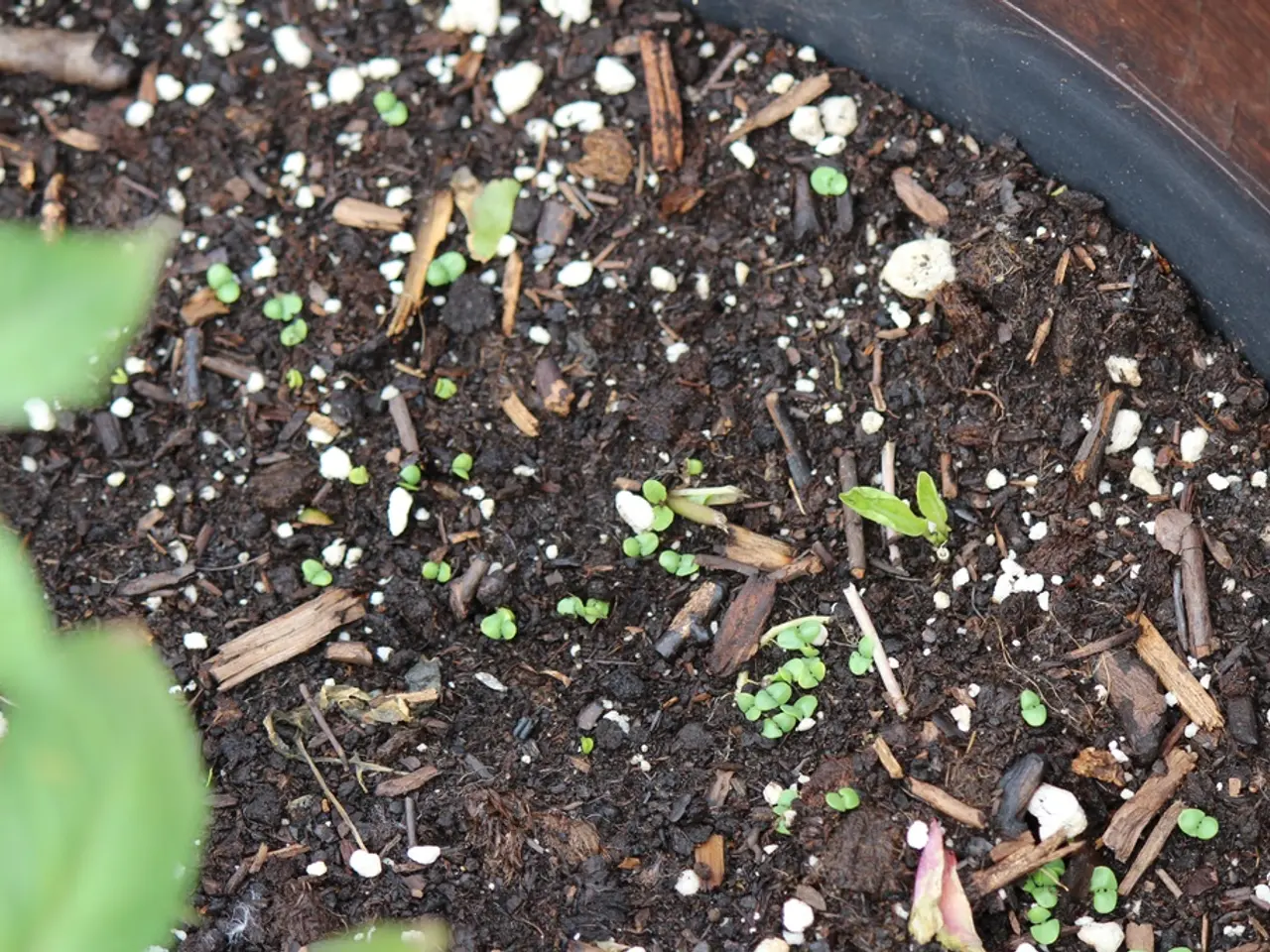Permaculture for Novices: A Straightforward Guide to Soil Renewal
In the pursuit of sustainable farming and gardening practices, understanding the importance of soil health is paramount. Soil, a living ecosystem teeming with microbes and fungi, plays a crucial role in supporting plant growth and maintaining a healthy environment.
Soil Structure Improvement
To build and maintain a healthy soil structure, several practical techniques can be employed. These include mulching, cover cropping, crop rotation, composting, minimal or no tillage, and biochar application. Mulching helps reduce erosion, keep soil moist, and enhance soil organism habitat. Cover crops protect the soil, add organic matter, improve fertility, and support beneficial insects. Crop rotation prevents pest buildup, enhances soil nutrients, and increases biodiversity. Composting and organic amendments boost soil fertility and microbial activity. Minimal or no tillage preserves soil structure and microbial habitats. Biochar improves soil water retention, nutrient availability, microbial habitat, and carbon sequestration.
Water Management
Effective water conservation is integral to sustainable soil management. Techniques such as rainwater harvesting, efficient irrigation systems, swales and ponds, and mulching for moisture retention can help manage water to keep soil healthy. Rainwater harvesting reduces dependency on external water sources, while swales and ponds capture and store rainwater, reducing runoff and increasing water availability. Drip irrigation minimizes water waste by delivering water directly to plant roots.
Biodiversity Enhancement
Biodiversity is essential for soil restoration. Permaculture sites have shown a higher soil carbon stock, better water infiltration, lower soil bulk density, higher earthworm abundance, and higher concentrations of various soil nutrients than other fields. Polyculture systems, integrating livestock, fungal inoculation, and compost teas boost symbiotic relationships and plant health. Planting diverse perennials and support plants establishes self-sustaining ecosystems.
Green manures like clover or alfalfa can be added to compost to make it better, as they fix nitrogen, adding more nutrients to the compost. Incorporating water conservation techniques into soil restoration efforts includes managing water to keep soil healthy, using swales, harvesting rainwater, and choosing drought-resistant plants.
Soil pH and Nutrient Availability
Soil pH affects nutrient availability. Most plants prefer a pH between 6.0 and 7.0. Soil needs the right nutrients, including nitrogen, phosphorus, and potassium, to support plant growth. These nutrients are listed as NPK on fertilizer labels. Soil pH testing is important to know if the soil is acidic or alkaline.
The Importance of Soil Restoration
Soil restoration is important for sustainable ecosystems and food production. It supports microorganisms and plants, helps with growth and water retention, and maintains a healthy environment. Signs of soil degradation include compaction, lack of organic matter, and erosion.
Creating a Diverse Landscape
To create a diverse landscape, choose a variety of native plants for your permaculture design. This diversity creates a self-sustaining ecosystem. Incorporating compost into soil restoration efforts enriches the soil with organic matter, improves water retention, and supports beneficial microbes.
These combined practices create a sustainable farming system that enhances soil health, efficiently manages water, and fosters complex biodiversity — core goals of permaculture. Regular soil checks can tell you a lot about your soil's health. Composting can be done at home by collecting organic waste, building a compost pile or bin, keeping it moist, turning it often, and checking its temperature.
The key principles of permaculture are working with nature, reducing waste, aiming for diverse, resilient systems, meeting human needs while protecting nature, and creating self-sustaining ecosystems.
- Incorporating composting into gardening practices enriches the soil with organic matter, improves water retention, and supports beneficial microbes.
- To build and maintain a healthy soil structure, techniques like mulching, cover cropping, crop rotation, composting, minimal or no tillage, and biochar application are beneficial.
- Biodiversity is essential for soil restoration, as it can lead to higher soil carbon stock, better water infiltration, lower soil bulk density, higher earthworm abundance, and higher concentrations of various soil nutrients.
- Effective water conservation is integral to sustainable soil management, with methods such as rainwater harvesting, efficient irrigation systems, swales and ponds, and mulching for moisture retention helping manage water to keep soil healthy.
- In sustainable farming and gardening, soil health is paramount, as it plays a crucial role in supporting plant growth and maintaining a healthy environment.
- The practice of companion planting, which involves planting diverse perennials and support plants, establishes self-sustaining ecosystems in permaculture designs.
- To maintain a healthy soil pH, it is important to know if the soil is acidic or alkaline, and to ensure that it provides the right nutrients, including nitrogen, phosphorus, and potassium, for plant growth.
- Soil restoration is essential for sustainable ecosystems and food production, as it supports microorganisms and plants, helps with growth and water retention, and maintains a healthy environment, while signs of soil degradation include compaction, lack of organic matter, and erosion.




